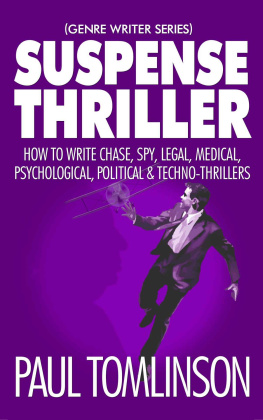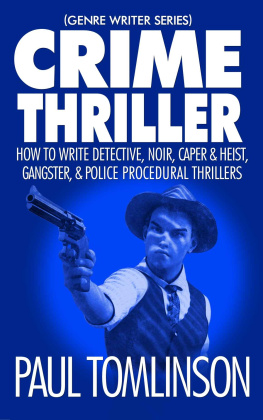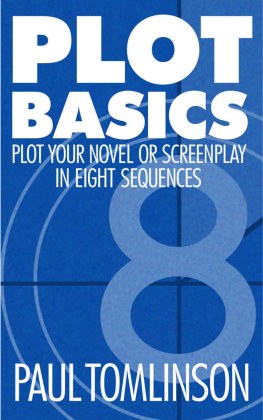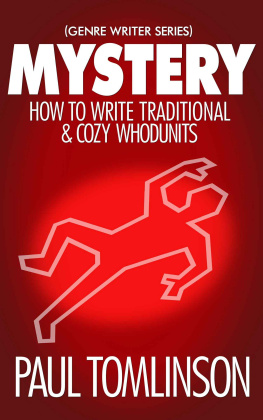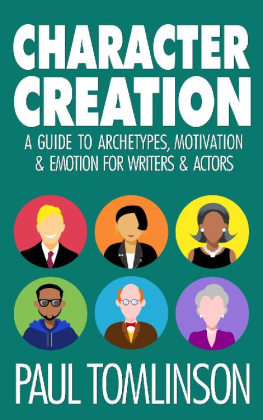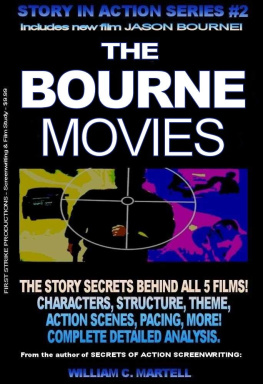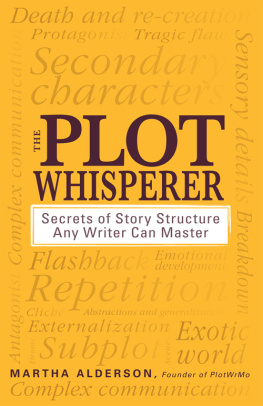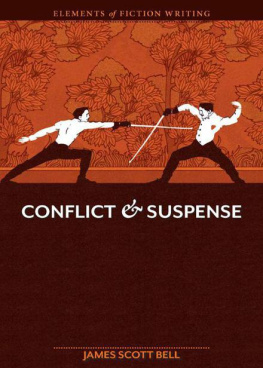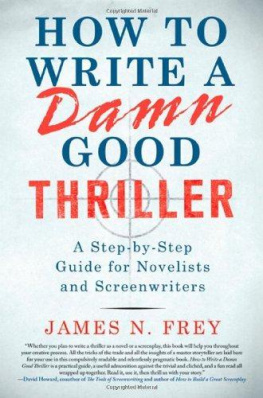Paul Tomlinson - Suspense Thriller: How to Write Chase, Spy, Legal, Medical, Psychological, Political & Techno-Thrillers
Here you can read online Paul Tomlinson - Suspense Thriller: How to Write Chase, Spy, Legal, Medical, Psychological, Political & Techno-Thrillers full text of the book (entire story) in english for free. Download pdf and epub, get meaning, cover and reviews about this ebook. year: 2018, publisher: Amazon Digital Services LLC - KDP Print US, genre: Art. Description of the work, (preface) as well as reviews are available. Best literature library LitArk.com created for fans of good reading and offers a wide selection of genres:
Romance novel
Science fiction
Adventure
Detective
Science
History
Home and family
Prose
Art
Politics
Computer
Non-fiction
Religion
Business
Children
Humor
Choose a favorite category and find really read worthwhile books. Enjoy immersion in the world of imagination, feel the emotions of the characters or learn something new for yourself, make an fascinating discovery.
- Book:Suspense Thriller: How to Write Chase, Spy, Legal, Medical, Psychological, Political & Techno-Thrillers
- Author:
- Publisher:Amazon Digital Services LLC - KDP Print US
- Genre:
- Year:2018
- Rating:3 / 5
- Favourites:Add to favourites
- Your mark:
Suspense Thriller: How to Write Chase, Spy, Legal, Medical, Psychological, Political & Techno-Thrillers: summary, description and annotation
We offer to read an annotation, description, summary or preface (depends on what the author of the book "Suspense Thriller: How to Write Chase, Spy, Legal, Medical, Psychological, Political & Techno-Thrillers" wrote himself). If you haven't found the necessary information about the book — write in the comments, we will try to find it.
The Thriller is one of the top-selling genres for books and its in the top five for movies. This is the genre of assassinations, Watergate-like conspiracies, and terrorist plots. Its where we find Lee Childs Jack Reacher, Robert Ludlums Jason Bourne and Dan Browns Robert Langdon. These writers built their heroes and their stories on genre conventions developed over the last 100 years -- and you can too.
How do you write one?
The trick to writing a successful thriller novel or screenplay is to know the conventions of the genre - what elements need to be in the story and what sort of plot structure readers and viewers expect. You could spend a long time reading and watching films to learn all of this - but you dont have to, because this book gives you all the details you need.
- Create a suspenseful story the way Alfred Hitchcock did it
- Write a super-spy thriller like a James Bond movie or hunt-the-mole like a John Le Carr spymaster
- Plot a legal thriller like John Grisham or Scott Turow
- Scare your readers with a Robin Cook style medical thriller
- Thrill readers with the latest military hardware like Tom Clancy
- Show what happens when technology goes wrong the way Michael Crichton did it
- Or plumb the depths of the human psyche and write a psychological thriller like Daphne Du Maurier and Patricia Highsmith
In these pages you will see how to raise the stakes for your hero, find more than a dozen techniques for generating and increasing suspense, how to write a killer chase, and templates for the different sub-genres of suspense thriller
Look out for Mystery and Crime Thrillers in the Genre Writer series and Plot Basics by the same author
Paul Tomlinson: author's other books
Who wrote Suspense Thriller: How to Write Chase, Spy, Legal, Medical, Psychological, Political & Techno-Thrillers? Find out the surname, the name of the author of the book and a list of all author's works by series.

